Showing 1–8 of 9 Products [Q A E > Regulations & Standards ]
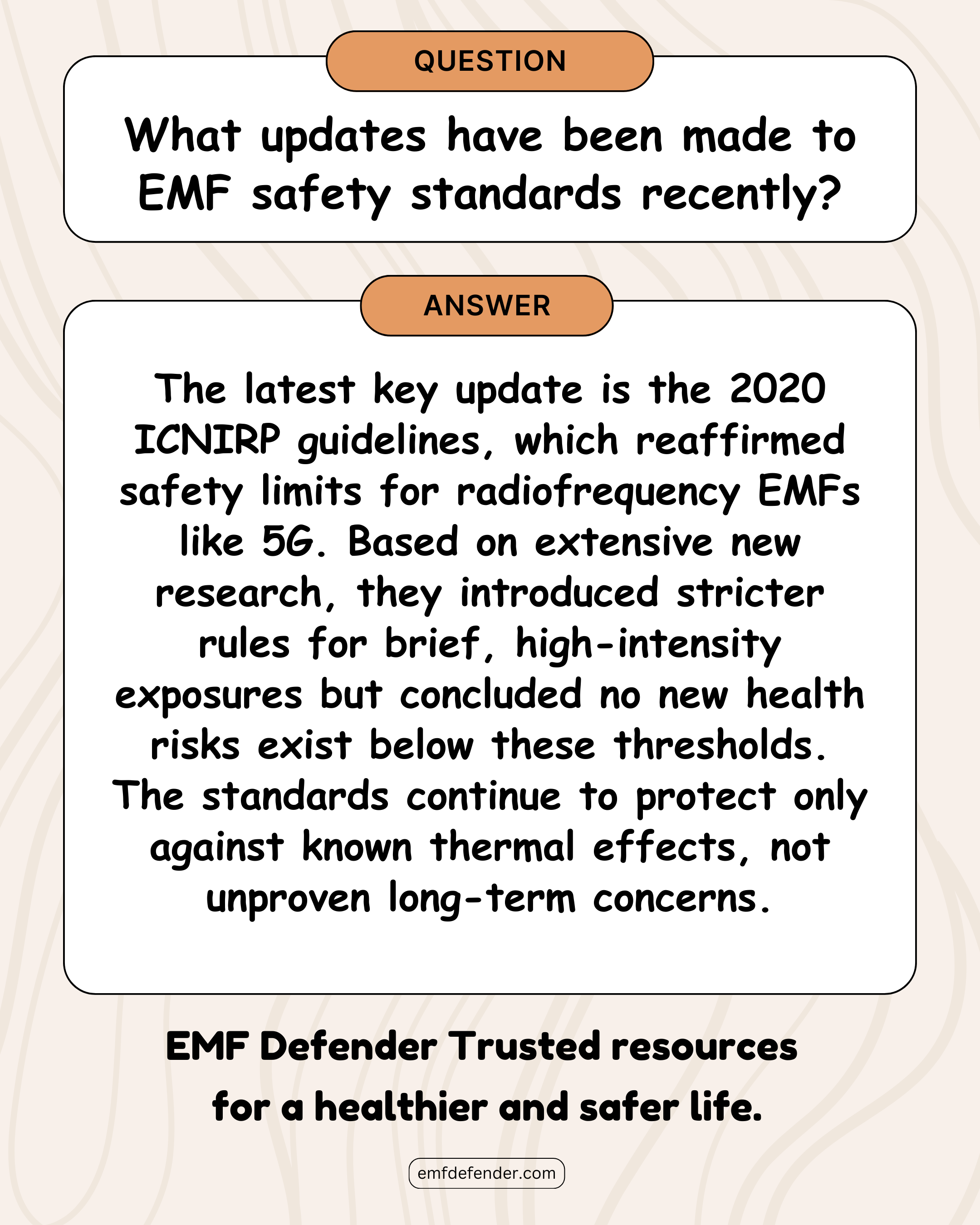
What updates have been made to EMF safety standards recently?
The latest key update is the 2020 ICNIRP guidelines, which reaffirmed safety limits for radiofrequency EMFs like 5G. Based on extensive new research, they introduced stricter rules for brief, high-intensity exposures but concluded no new health risks exist below these thresholds. The standards continue to protect only against known thermal effects, not unproven long-term concerns.
Additional Information:
..
Additional Information:
..
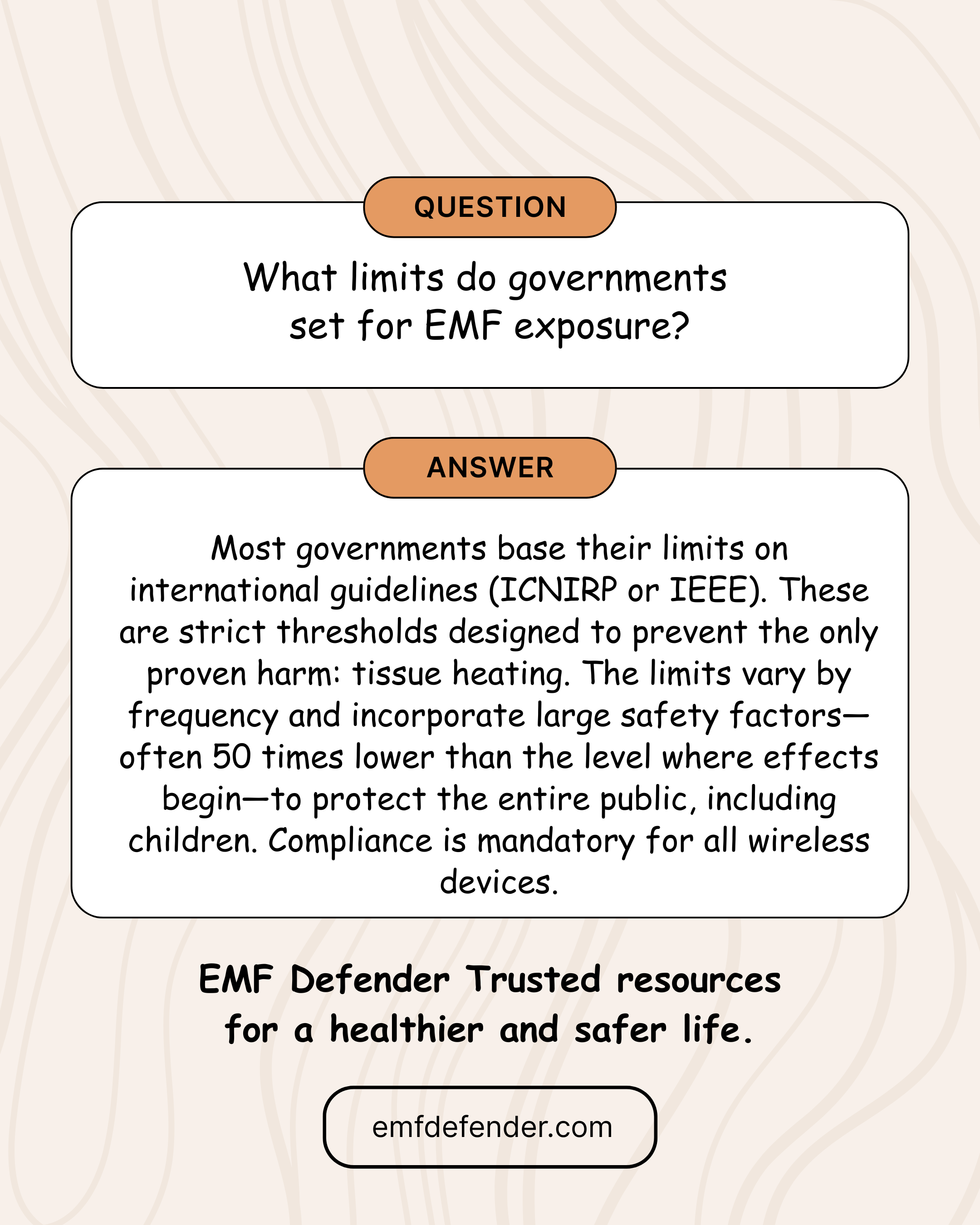
What limits do governments set for EMF exposure?
Most governments base their limits on international guidelines (ICNIRP or IEEE). These are strict thresholds designed to prevent the only proven harm: tissue heating. The limits vary by frequency and incorporate large safety factors—often 50 times lower than the level where effects begin—to protect the entire public, including children. Compliance is mandatory for all wireless devices.
Additional Information:
..
Additional Information:
..
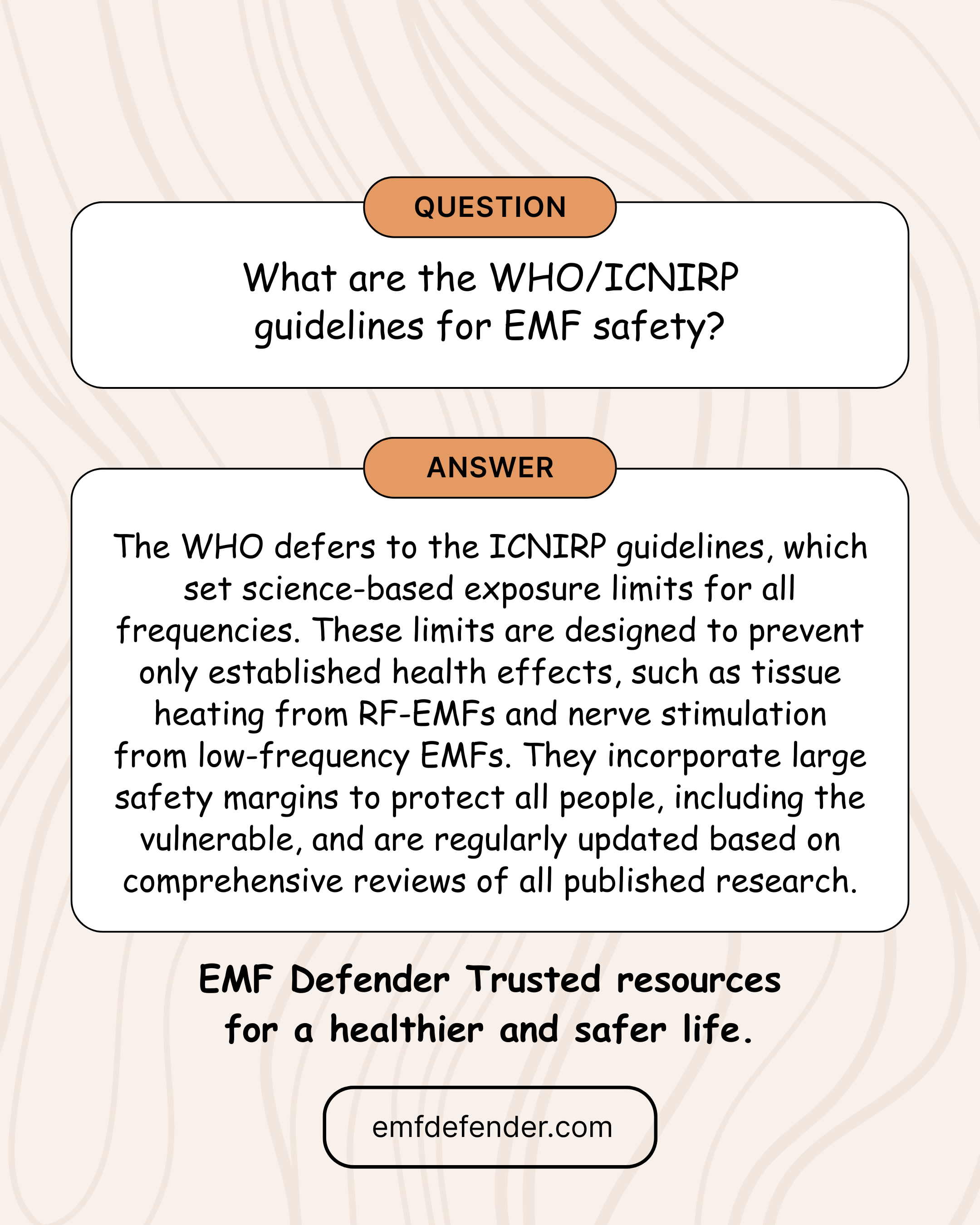
What are the WHO/ICNIRP guidelines for EMF safety?
The WHO defers to the ICNIRP guidelines, which set science-based exposure limits for all frequencies. These limits are designed to prevent only established health effects, such as tissue heating from RF-EMFs and nerve stimulation from low-frequency EMFs. They incorporate large safety margins to protect all people, including the vulnerable, and are regularly updated based on comprehensive reviews of all published research.
Additional Information:
..
Additional Information:
..
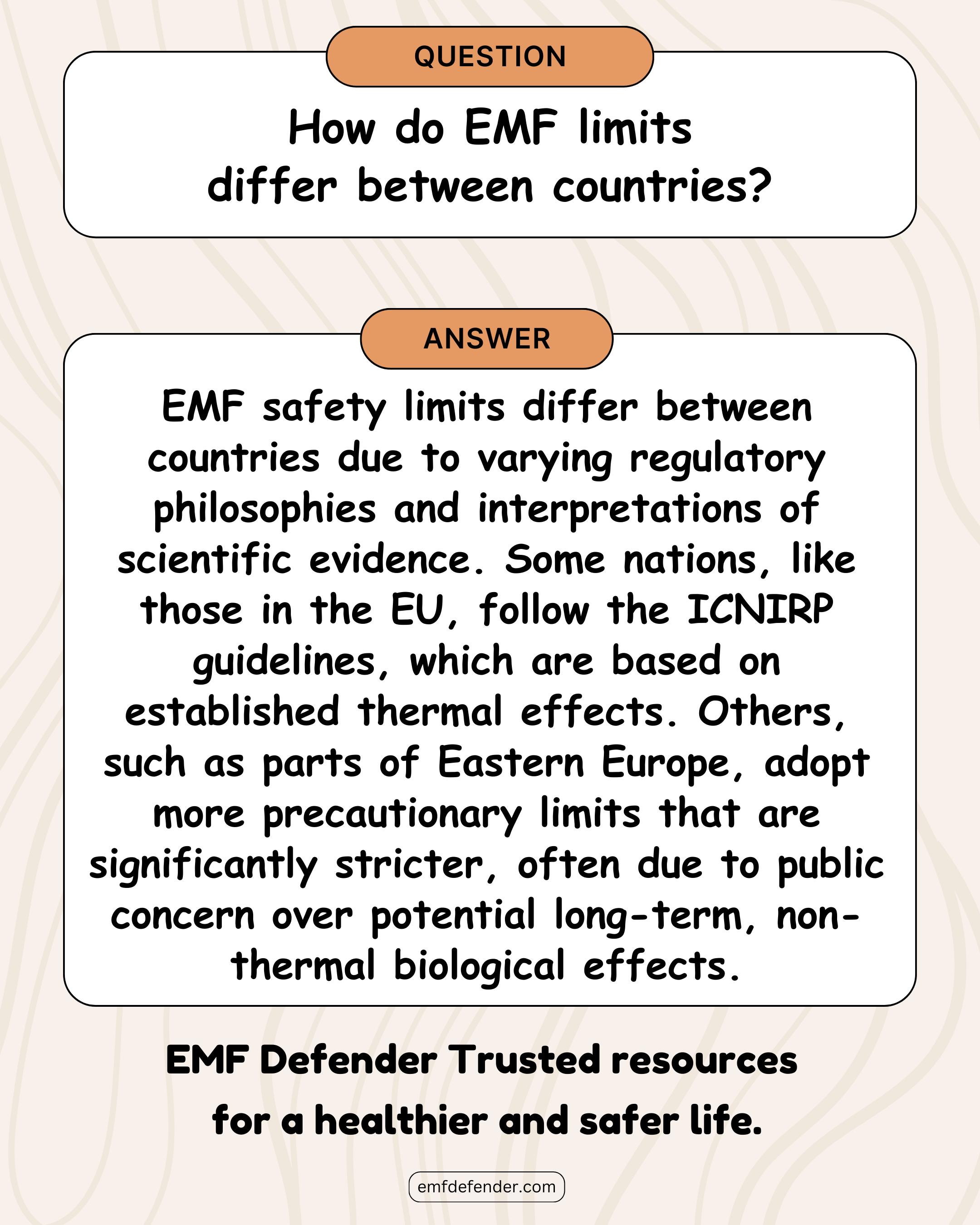
How do EMF limits differ between countries?
EMF safety limits differ between countries due to varying regulatory philosophies and interpretations of scientific evidence. Some nations, like those in the EU, follow the ICNIRP guidelines, which are based on established thermal effects. Others, such as parts of Eastern Europe, adopt more precautionary limits that are significantly stricter, often due to public concern over potential long-term, non-thermal biological effects.
Additional Information:
..
Additional Information:
..
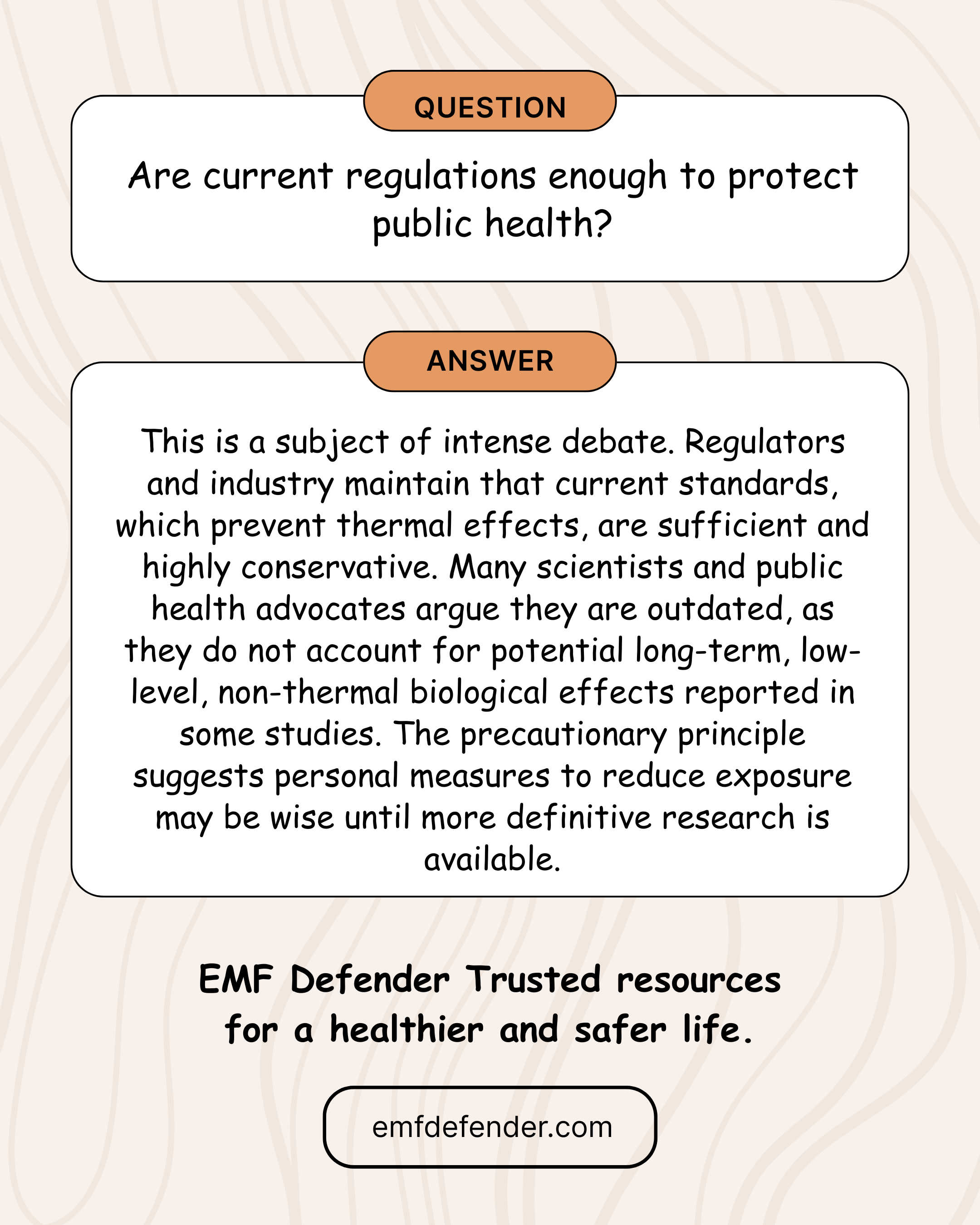
Are current regulations enough to protect public health?
This remains a subject of active debate. Regulators and industry experts argue that existing standards—which prevent thermal effects—are sufficient and conservative. However, many scientists and health advocates believe these guidelines are outdated, as they often fail to consider potential long-term, low-level, non-thermal biological effects noted in some studies. Until more definitive evidence is available, the precautionary principle suggests taking personal steps to reduce EMF exposure as a sensible safeguard for public health.
Additional Information:
..
Additional Information:
..
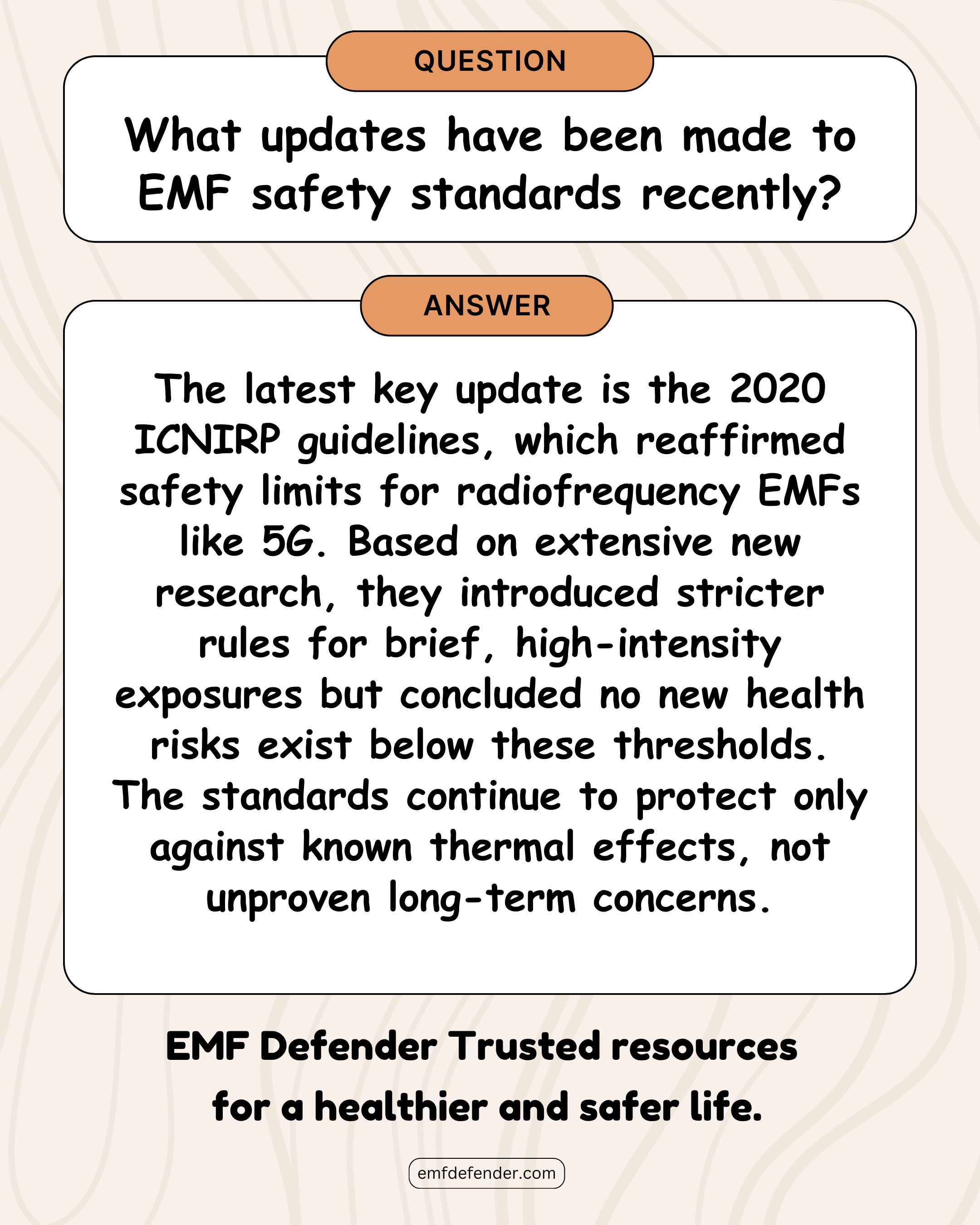
What updates have been made to EMF safety standards recently?
Yes. The most significant update came in 2020 with the revised ICNIRP guidelines, which reaffirmed safety limits for radiofrequency EMFs, including 5G. These updates introduced stricter exposure rules for short-term, high-intensity signals but found no evidence of new health risks below the set thresholds. The standards remain focused on protecting against established thermal effects, such as tissue heating, while not addressing unproven or long-term health concerns still under study.
Additional Information:
..
Additional Information:
..
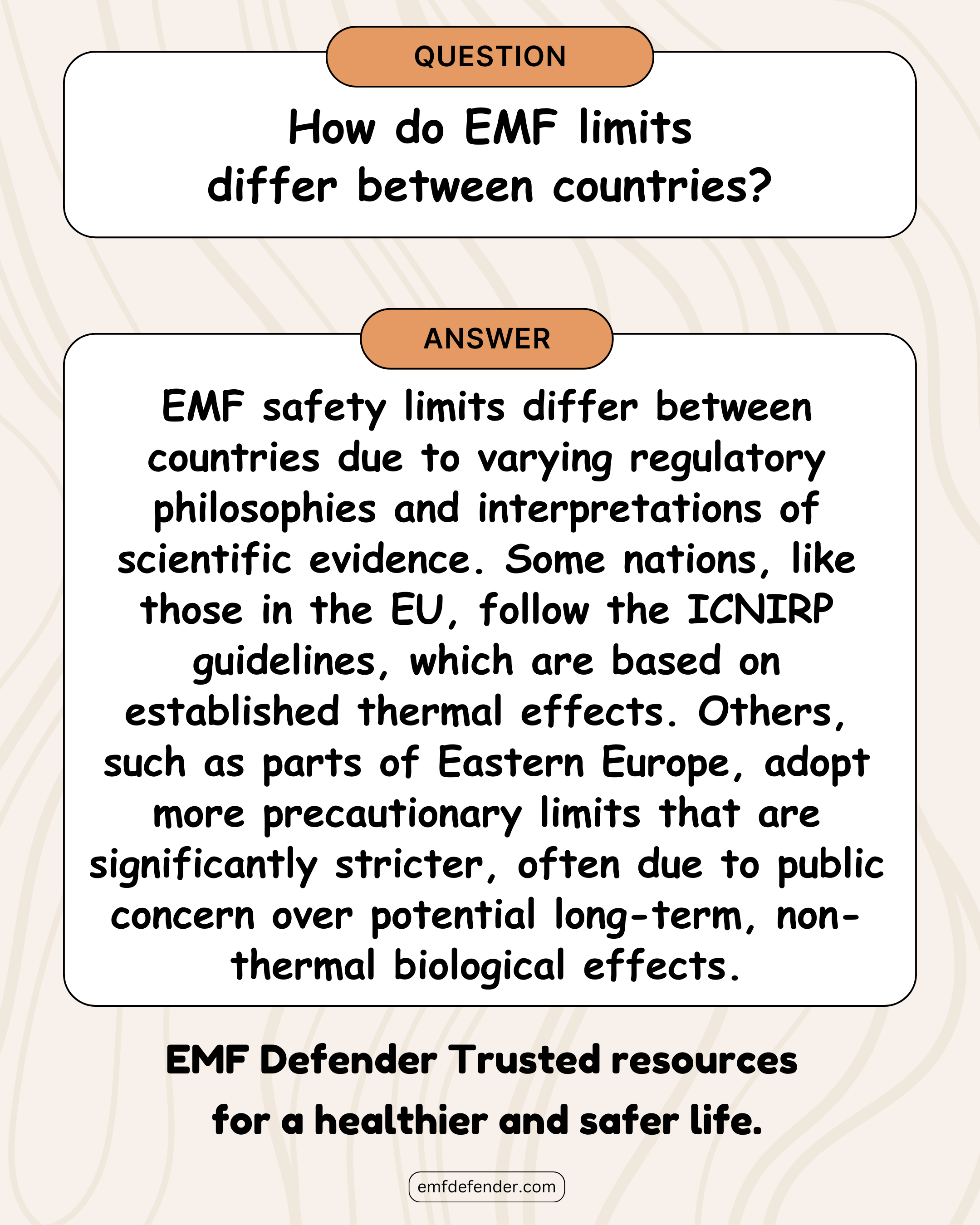
How do EMF limits differ between countries?
EMF safety limits vary worldwide because of different regulatory approaches and interpretations of scientific data. Many countries, such as those in the EU, follow ICNIRP guidelines, which are based on proven thermal effects of EMFs. Other regions, including parts of Eastern Europe, apply stricter precautionary limits due to heightened public concern about possible long-term, non-thermal biological impacts. These differences highlight how cultural attitudes, scientific evaluation, and policy priorities shape national EMF regulations.
Additional Information:
..
Additional Information:
..
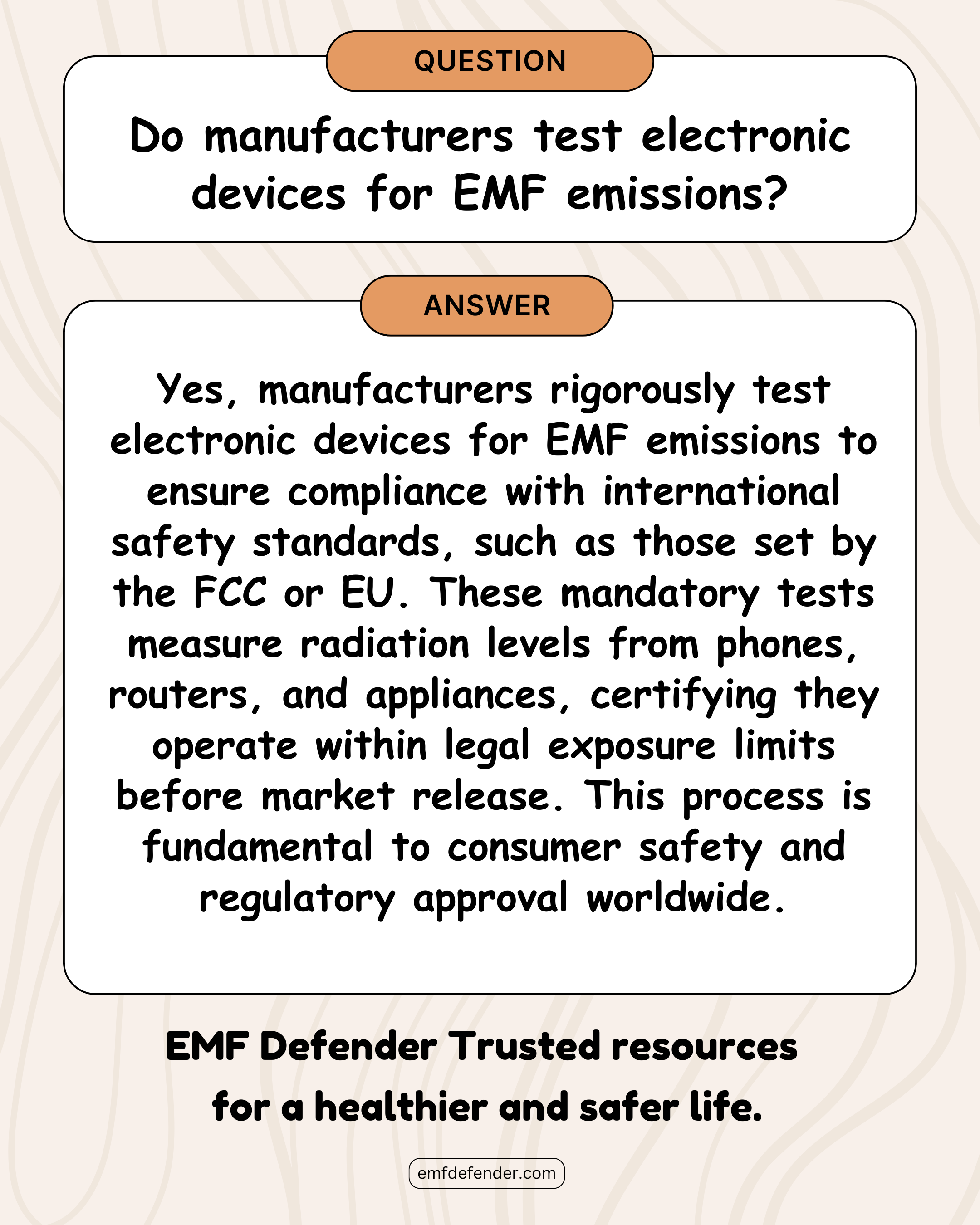
Do manufacturers test electronic devices for EMF emissions?
Yes. Manufacturers are required to test electronic devices for EMF emissions to meet international safety standards, such as those set by the FCC, EU, or other regulatory bodies. These tests measure radiation levels from phones, routers, appliances, and similar devices, ensuring they remain within legal exposure limits before being sold. Certification is mandatory for market approval and is a key safeguard to protect consumer health while maintaining compliance with global regulatory frameworks.
Additional Information:
..
Additional Information:
..